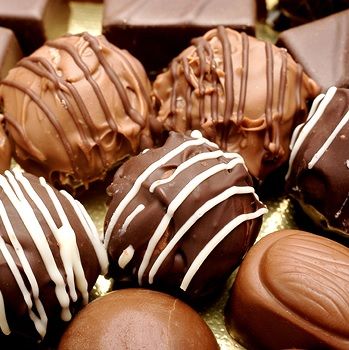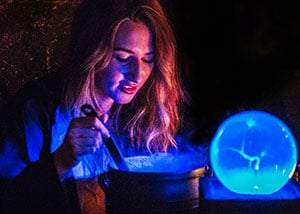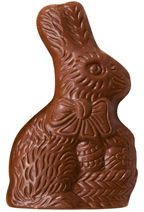 With Easter hopping back into our lives in a few days, another chocolate-infused holiday is upon us! Kids will delight in baskets full of colorfully-wrapped candies and plastic eggs hidden with reinforcements. And parents will reluctantly oblige to the sugar rush exception “just this once.”
With Easter hopping back into our lives in a few days, another chocolate-infused holiday is upon us! Kids will delight in baskets full of colorfully-wrapped candies and plastic eggs hidden with reinforcements. And parents will reluctantly oblige to the sugar rush exception “just this once.”
But before these foil-wrapped goodies grace the bellies of their young (and young-at-heart) fans, exactly where does chocolate come from?
Chocolate is not the product of a “cocoa plant,” per se. It actually comes from the cacao tree (pronounced “ka-kow”), formally known as Theobroma cacao. Native to Central and South America, this tree is a tropical evergreen that is also commercially grown in East Africa. The cacao can grow up to 40 feet tall, though it is known to dwell in the shade of the rainforest canopy and along rivers. Most of these trees lives for up to 100 years, but are only productive in bearing their chocolate-making fruit for about 60 years (or far less in some regions).
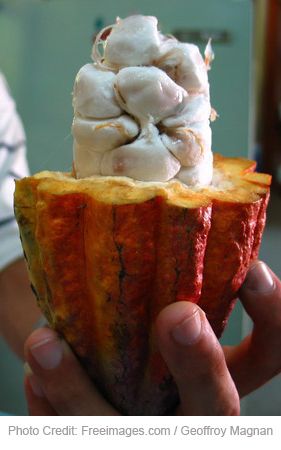 The cacao tree is adorned with 60-70 football-shaped pods that grow from its branches and trunk. As the pods mature over a course of about six months, the inside fills with 30-40 seeds and a sticky, white pulp. This pulp is sweet and tart to the taste, so is often used in drinks. The seeds (known as beans), however, are extremely bitter.
The cacao tree is adorned with 60-70 football-shaped pods that grow from its branches and trunk. As the pods mature over a course of about six months, the inside fills with 30-40 seeds and a sticky, white pulp. This pulp is sweet and tart to the taste, so is often used in drinks. The seeds (known as beans), however, are extremely bitter.
So where does chocolate come from, then? How do you make chocolate of the delicious, indulgent Easter variety? Once ripe, pods are harvested with machetes about twice a year. The pods are then broken open to reveal the beans inside. It’s now time for one of the most pivotal steps in the chocolate-making process: fermentation. For several days, the beans are placed in wooden “sweating” boxes or pits, covered by large banana leaves. This fermenting is what gives the beans their color, flavor and aroma.
Following fermentation, the cacao beans are dried in the sun or via specialized equipment. They are them sent to a factory to be cleaned and cracked, separating the outer bean shell from the ‘nib’ inside. The nibs are then roasted, which further adds to their rich, brown color and signature flavor.
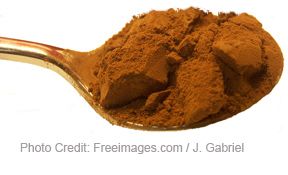 After roasting, the nibs undergo grinding, thereby turning them into a thick liquid, known as a ‘mass.’ The mass solidifies upon cooling, and this is the actual point in chocolate-making game in which the cacao beans have become ‘cocoa’ and serve as the foundation for all chocolate and authentic cocoa products. So herein lies the answer to the almighty “where does chocolate come from?” question.
After roasting, the nibs undergo grinding, thereby turning them into a thick liquid, known as a ‘mass.’ The mass solidifies upon cooling, and this is the actual point in chocolate-making game in which the cacao beans have become ‘cocoa’ and serve as the foundation for all chocolate and authentic cocoa products. So herein lies the answer to the almighty “where does chocolate come from?” question.
The cocoa mass is pressed, extracting the cocoa butter necessary for making chocolate for family and friends to enjoy over your Easter festivities. And the block that’s left behind as a result? It’s minced into cocoa powder, which is typically used in beverages and cooking.
Pretty sweet to figure out where chocolate comes from, huh? And now you can peel back those cute, pastel wrappers in a few days feeling nearly guilt-free. Because Easter is a perfect time to tell yourself that as you tantalize your taste buds, you’re essentially indulging in fruit. Right? (*Wink, wink.*)
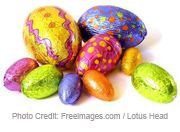
Want to learn more about the history of chocolate and how your favorite white, milk and dark chocolate treats are made or molded? Many aficionados around the globe happily offer chocolate lessons and tours (complete with samples!) to the public. So find one near you, or indulge while on vacation! A chocolatier will teach you all you need to know to give your sweet tooth the ultimate satisfaction.

